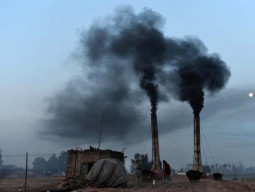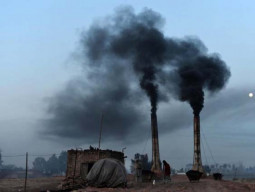
Historically, carbon emissions are considered to be a direct or indirect outcome of anthropogenic activities happening for the past many decades. In fact, numerous reports based on climate-change issues are discussing carbon emissions as a major cause of climatic changes, including Inter-governmental Panel on Climate Change (IPCC). It is considered one of major reasons for the rise of temperature and its adverse consequences are felt especially in developing countries. Evidently rising trends of carbon particles in air, from 280 parts per million (ppm) in the pre-industrial age to 316 ppm in 1958 and over 400 ppm in 2013, proves its possible negative impact on world environment.
The world atlas for carbon emission shows that China is the highest contributor of carbon emission followed by the United States, India, Russia, Japan and rest of countries. Pakistan is ranked 33rd in the world by contributing 171 MtCO2 in year 2015. The emissions of Pakistan are also calculated by Global Change Impact Studies Centre.
According to this report, emissions have increased from 212.9 million tonnes of CO2 in 1994 to 374.1 million tonnes of CO2 equivalents in 2012. These calculations are based on five components share from energy sector (45.8%), industrial processes (5.2%), agriculture (43.5%), Land-Use Change and Forestry (LUCF, 2.6%), and waste sector (2.8%).
Going through the above numbers given by both; atlas and GSISC report, we can get facts about the share or contribution of aforementioned sectors. But, it becomes unclear when we try to differentiate between formal and informal sectors’ contribution in overall emissions. It can be elaborated with a short example: consider the industrial sector of an economy that has 10 formally registered industries and 30 informal or non-registered industries. Now, it is not clear whether emissions estimation is based on formally registered industries or it is a combination of both; formal and informal.
Another example of livestock can be considered for better understanding. The majority of livestock is not accounted on village level. Suppose, an economy having 10 goats, two donkeys and three cows and their sum becomes 15. On the contrary, if the overall number of livestock in that economy exceeds 100, then, how can it truly depict the picture of carbon emission in the agriculture sector? Undeniably, the measuring of the informal sector is challenging and perhaps its contribution can’t be excluded from carbon emission calculations.
The exclusion of informal sector means we are not using a proper yardstick for calculation of carbon emissions. Once, the yardstick is wrong then it becomes meaningless to base it for future projections of emissions, or preparing climate finances for mitigation and adaptation plans. Therefore, we need to add this informal part into account for estimating the approximate share of CO2 footprint nationally. It will not only contribute in improving its projections but also help in developing mitigation and adaptation plans.
Published in The Express Tribune, September 14th, 2017.
Like Opinion & Editorial on Facebook, follow @ETOpEd on Twitter to receive all updates on all our daily pieces.











































COMMENTS
Comments are moderated and generally will be posted if they are on-topic and not abusive.
For more information, please see our Comments FAQ